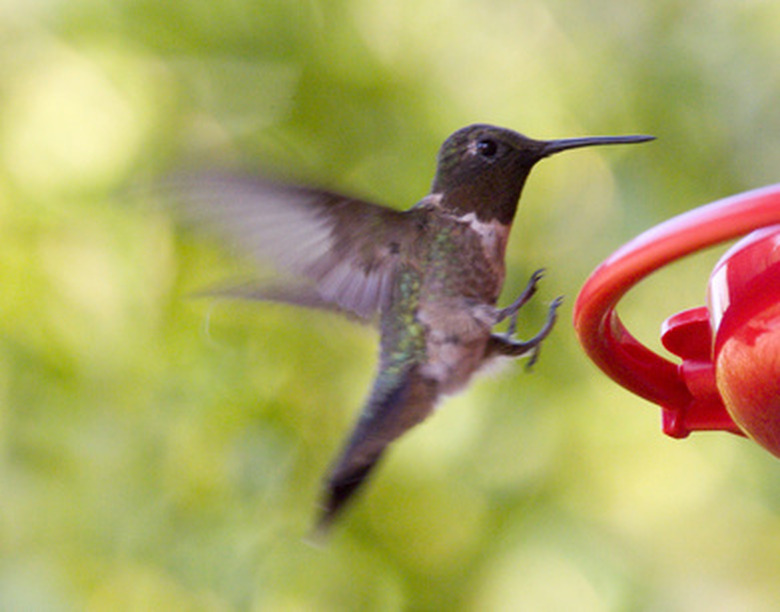How To Track A Hummingbird's Migration
Hummingbirds can fly for hundreds of miles without stopping for food or rest. Sixteen species of hummingbird are known to nest in the U.S., appearing in spring and leaving in fall. Banding is the most accurate way of tracking the migration of the hummingbird, but is a process that has to be carried out by licensed professionals. However, it is possible to follow the migration of the hummingbird online.
Step 1
Join an online community that tracks the migration of hummingbirds. Consider becoming a "citizen scientist" at learner.org. Joining an online community is a great way to share tips and experiences–and to not only follow the migration process, but to participate in it.
Step 2
To encourage hummingbirds to visit your garden, buy a bird feeder and fill it with food they like. Hummingbirds love nectar; one recipe for hummingbird nectar can be found on worldofhummingbirds.com. You can find out online when the birds are expected to be in your area and when the best time to put the feeder out would be.
Howtoenjoyhummingbirds.com provides advice on when to put the feeder out. It says that mid-March is a good time to start feeding in southern parts of the country, while early April makes sense for Virginia, Kentucky and Missouri, and hummingbirds make their way north from there, reaching New England states by the end of April.
As hummingbirds migrate on a similar path year after year, if they were in your area one year in June, for example, they will appear around the same time the following year.
Step 3
Keep an eye on the bird feeder and wait for hummingbirds to visit. Make a note of the kind of hummingbird that visits. The Ruby-throated hummingbird is the most common in eastern North America, but there are other varieties and you will be able to find pictures to refer to either in books or online. Howtoenjoyhummingbirds.com is one such resource. In total, 16 varieties of hummingbird are regularly seen in the U.S.
Step 4
Go to the "report" section of your chosen reference website and report the observations made in your garden. This information will be saved in the website's database and be used alongside information provided by other trackers to produce a map. If you were able to take a photograph of the bird, depending on the website you are using, there may be a mechanism for uploading that as well.
Step 5
Check the website's migration map regularly to follow the hummingbird's progress.
Cite This Article
MLA
McCormick, Colette. "How To Track A Hummingbird's Migration" sciencing.com, https://www.sciencing.com/track-hummingbirds-migration-7786244/. 22 November 2019.
APA
McCormick, Colette. (2019, November 22). How To Track A Hummingbird's Migration. sciencing.com. Retrieved from https://www.sciencing.com/track-hummingbirds-migration-7786244/
Chicago
McCormick, Colette. How To Track A Hummingbird's Migration last modified March 24, 2022. https://www.sciencing.com/track-hummingbirds-migration-7786244/
